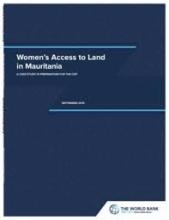Land Library
Welcome to the Land Portal Library. Explore our vast collection of open-access resources (over 74,000) including reports, journal articles, research papers, peer-reviewed publications, legal documents, videos and much more.
/ library resources
Showing items 1 through 9 of 25.This note is part of an Action Notes series and provides guidance for governments and companies on how to ensure that the impact of agricultural investments on water resources is effectively measured, monitored, and regulated.
This note is part of an Action Notes series and provides guidance for governments and companies on the overall approach to consulting, engaging, and partnering with local communities, to bridge gaps in information and expectation between communities and companies and create the social license to
/*-->*/
This note is part of an Action Notes series and provides guidance for governments and companies on how they can provide effective remedies to affected parties who perceive that their rights have been adversely affected by invesments.
This note is part of an Action Notes series and provides guidance for governments and companies on practices to reduce gender inequalities and to empower women to make a positive contribution to development through agricultural investments.
This note is part of an Action Notes series and provides guidance for governments and companies on how to ensure that an agricultural investment generates positive impacts on the local economy by encouraging and supporting opportunities arising for individuals, farmers, businesses, and institutio
The study examined the status of women’s land rights in India, using Agricultural Census data, with state-wise and district-wise granularity and presents tables and maps depicting women’s land rights against indicators, further segregated across ethnicity and socio-economic categories.
Almost a decade after large land-based
investment for agriculture increased sharply, opinions on
its impact continue to diverge, partly because (positive or
negative) spillovers on neighboring smallholders have never








